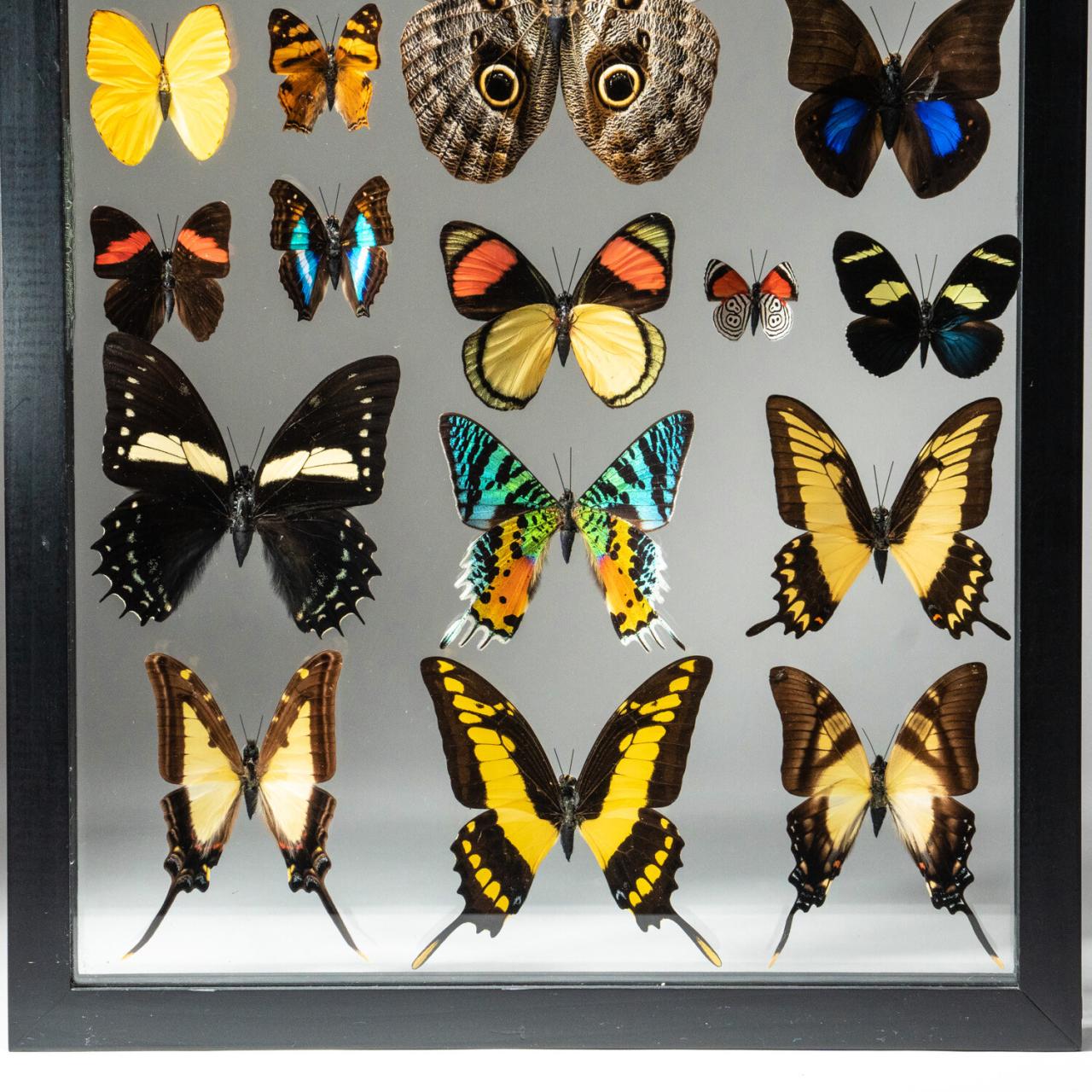Butterfly Wing Structure and Glare Reduction: Butterfly Wings Could Be The Key To Glare Free Displays
The iridescent beauty of butterfly wings isn’t just for show; it’s a testament to nature’s ingenuity in minimizing glare. These delicate structures are equipped with a sophisticated nanostructure that effectively reflects and scatters light, preventing unwanted glare.
Butterfly Wing Nanostructure
The unique nanostructure of butterfly wings is responsible for their remarkable anti-glare properties. These wings are covered in tiny scales, which are themselves composed of even smaller structures called lamellae. These lamellae are stacked in a layered fashion, creating a complex network of air pockets and reflective surfaces. This intricate arrangement plays a crucial role in controlling the way light interacts with the wing, leading to reduced glare.
Comparison with Traditional Anti-Glare Coatings
Traditional anti-glare coatings, often used on eyeglasses and computer screens, typically rely on roughening the surface to scatter light. This scattering effect helps to diffuse the light, reducing the intensity of reflections. However, butterfly wings take a different approach. Instead of roughening the surface, they utilize a precisely engineered nanostructure to manipulate light at a much finer scale. This approach offers several advantages, including:
- Enhanced Anti-Glare Performance: Butterfly wing nanostructures are highly effective in reducing glare, even at specific wavelengths of light. This is because they can manipulate light at the nanoscale, achieving greater control over reflection and scattering.
- Reduced Thickness: Butterfly wings demonstrate that effective anti-glare properties can be achieved with a remarkably thin structure. This is in contrast to traditional coatings, which often require a thicker layer to achieve comparable results.
- Biocompatibility: Butterfly wings are naturally occurring structures, making them inherently biocompatible. This is a significant advantage for potential applications in bio-inspired materials and devices.
Light Interaction with Butterfly Wing Nanostructure
The nanostructure of butterfly wings interacts with light in a fascinating way. When light strikes the wing, it encounters the layered lamellae. These layers act as a series of thin films, creating interference patterns that determine how the light is reflected and transmitted. The air pockets within the lamellae further contribute to light scattering, reducing the intensity of reflections. This intricate interplay of reflection, interference, and scattering leads to the butterfly’s remarkable anti-glare properties.
Applications in Display Technology
The unique anti-glare properties of butterfly wings, with their intricate nanostructures, offer a fascinating avenue for improving display technology. By mimicking these structures, we can potentially create glare-free screens with enhanced visual clarity and reduced eye strain.
Potential Advantages of Butterfly Wing-Inspired Technology in Display Screens
The application of butterfly wing-inspired technology in display screens holds the potential for several advantages, contributing to a more comfortable and immersive viewing experience.
- Reduced Glare: The primary benefit of this technology lies in its ability to significantly reduce glare. By incorporating nanostructures that mimic the anti-reflective properties of butterfly wings, displays can minimize light scattering and reflection, resulting in clearer and more comfortable viewing, even in bright environments.
- Enhanced Contrast and Color Accuracy: The reduced glare directly translates to improved contrast and color accuracy. With less light scattering, the display can reproduce colors more accurately, leading to a more vibrant and immersive visual experience.
- Reduced Eye Strain: Glare is a major contributor to eye strain and fatigue. By minimizing glare, butterfly wing-inspired technology can reduce the strain on the eyes, making it particularly beneficial for extended viewing sessions.
- Improved Power Efficiency: By reducing the amount of light reflected back from the screen, butterfly wing-inspired technology can potentially improve power efficiency. Less energy is wasted on unwanted reflections, leading to a more sustainable display.
Challenges and Limitations of Implementing Butterfly Wing-Inspired Technology
While the potential benefits of butterfly wing-inspired technology in display screens are promising, several challenges and limitations need to be addressed for successful implementation.
- Manufacturing Complexity: Replicating the intricate nanostructures of butterfly wings on a large scale for display screens poses a significant manufacturing challenge. Achieving precise control over the nanoscale features is crucial for optimal anti-glare performance.
- Cost: The manufacturing complexity translates to potentially higher production costs. The technology may initially be more expensive compared to conventional anti-glare solutions.
- Durability: The delicate nanostructures might be susceptible to damage, impacting the long-term performance and durability of the display. Further research is needed to ensure the technology’s robustness in real-world applications.
Research and Development
The potential of butterfly wing structures for glare-free displays has sparked intense research and development efforts. Scientists and engineers are meticulously studying the intricate nanoscale structures of butterfly wings to unlock the secrets behind their remarkable anti-reflective properties. These efforts aim to translate these natural principles into practical applications for advanced display technologies.
Ongoing Research Efforts
The quest to replicate butterfly wing structures for glare-free displays involves a multifaceted approach. Researchers are employing various techniques to mimic the intricate patterns and nanostructures found on butterfly wings. These methods include:
- Nanofabrication: This technique involves using sophisticated tools to create artificial nanostructures that mimic the arrangement of scales on butterfly wings. This approach allows for precise control over the size, shape, and spacing of the nanostructures, enabling the fine-tuning of anti-reflective properties.
- Biomimicry: This approach focuses on directly replicating the natural structures of butterfly wings. Researchers are investigating methods to transfer or grow butterfly wing scales onto display surfaces. This method aims to harness the inherent anti-reflective properties of the natural structures.
- Material Science: The development of new materials that exhibit similar optical properties to butterfly wing scales is crucial. Researchers are exploring materials like metamaterials, photonic crystals, and specially engineered polymers that can mimic the light-scattering behavior of butterfly wings.
Potential Impact on Display Technology
The successful integration of butterfly wing-inspired structures into display technology holds immense potential to revolutionize the user experience. The anti-reflective properties of these structures can significantly enhance display quality, leading to:
- Reduced Glare: The elimination of glare and reflections would enhance the clarity and visibility of displays, especially in bright environments.
- Improved Color Accuracy: By minimizing light scattering, butterfly wing structures can contribute to more accurate color reproduction, resulting in richer and more vibrant visuals.
- Enhanced Energy Efficiency: Reducing glare can lead to improved energy efficiency by minimizing the need for higher backlight intensity to compensate for reflections.
- Wider Viewing Angles: The anti-reflective properties of butterfly wing structures can potentially improve viewing angles, making displays more accessible from various perspectives.
Timeline of Key Milestones, Butterfly wings could be the key to glare free displays
The development of butterfly wing-inspired displays is an ongoing journey with several key milestones:
- 2000s: Early research on the anti-reflective properties of butterfly wings, leading to the identification of the underlying nanostructures responsible for these properties.
- 2010s: Development of nanofabrication techniques capable of creating artificial structures mimicking butterfly wing scales. Initial prototypes of anti-reflective coatings inspired by butterfly wings are demonstrated.
- 2020s: Continued research and development of biomimicry and material science approaches. Focus on integrating butterfly wing-inspired structures into display panels and devices.
- Future: The widespread adoption of butterfly wing-inspired displays, revolutionizing display technology and offering users enhanced viewing experiences.
Potential Benefits and Implications
The potential benefits of glare-free displays extend far beyond just improved user experience. This technology holds the key to revolutionizing various industries, from healthcare and aviation to entertainment and education. By eliminating glare, these displays enhance clarity, improve readability, and reduce eye strain, leading to significant advancements in various fields.
Benefits Across Industries
The potential benefits of glare-free displays are substantial and extend across various industries.
- Healthcare: In medical imaging, glare-free displays can significantly enhance the accuracy of diagnoses. Surgeons can perform complex procedures with greater precision, while radiologists can analyze images with enhanced clarity, leading to better patient outcomes.
- Aviation: Pilots rely on clear visibility for safe navigation, and glare-free displays can improve cockpit visibility, particularly in challenging weather conditions. This technology can enhance situational awareness and reduce pilot fatigue, leading to safer flights.
- Entertainment: Glare-free displays can transform the entertainment experience, offering a more immersive and enjoyable viewing experience. Consumers can enjoy movies and games with enhanced clarity and visual fidelity, regardless of ambient lighting conditions.
- Education: Students can benefit from glare-free displays in classrooms, allowing them to focus on learning materials without distractions. These displays can reduce eye strain and improve reading comprehension, creating a more conducive learning environment.
Environmental Impact of Bio-Inspired Technology
The use of bio-inspired technology in display manufacturing offers potential environmental benefits.
- Reduced Energy Consumption: Glare-free displays can potentially reduce energy consumption by minimizing the need for bright backlighting. This can lead to significant energy savings in homes, offices, and public spaces.
- Sustainable Materials: Bio-inspired materials used in glare-free displays can be derived from renewable sources, reducing reliance on traditional materials with high environmental impact. This shift towards sustainable materials aligns with efforts to promote environmentally responsible manufacturing practices.
Implications for Consumer Electronics and Related Fields
The development of glare-free displays holds significant implications for the future of consumer electronics and related fields.
- Next-Generation Displays: Glare-free displays are expected to become a standard feature in future consumer electronics, including smartphones, tablets, laptops, and televisions. This will enhance user experience and drive innovation in the display industry.
- Augmented and Virtual Reality: Glare-free displays can play a crucial role in the advancement of augmented and virtual reality (AR/VR) technologies. By eliminating glare, these displays can create more immersive and realistic experiences, opening new possibilities for entertainment, education, and training.
- Wearable Technology: Glare-free displays can be incorporated into wearable devices, enhancing visibility and user experience. This technology can improve the functionality of smartwatches, fitness trackers, and other wearable devices.
Butterfly wings could be the key to glare free displays – The potential benefits of butterfly wing-inspired displays are far-reaching. Imagine a world where your phone screen doesn’t reflect blinding sunlight, or where you can comfortably watch your favorite shows without squinting. This technology could revolutionize the way we interact with our devices, making them more enjoyable and accessible to everyone. While there are still challenges to overcome, the future of display technology is looking brighter than ever, thanks to the tiny, iridescent wings of a butterfly.
It’s amazing how nature inspires innovation, right? Butterfly wings, for example, could hold the key to glare-free displays, thanks to their unique nano-structure. Speaking of unique structures, remember that time CERN announced they’d discovered the Force? It was an epic April Fool’s joke , but it highlights how even seemingly fantastical concepts can inspire real-world advancements. And who knows, maybe someday we’ll be using the principles of butterfly wings to create displays that are as vibrant and mesmerizing as the butterflies themselves.
 Standi Techno News
Standi Techno News

